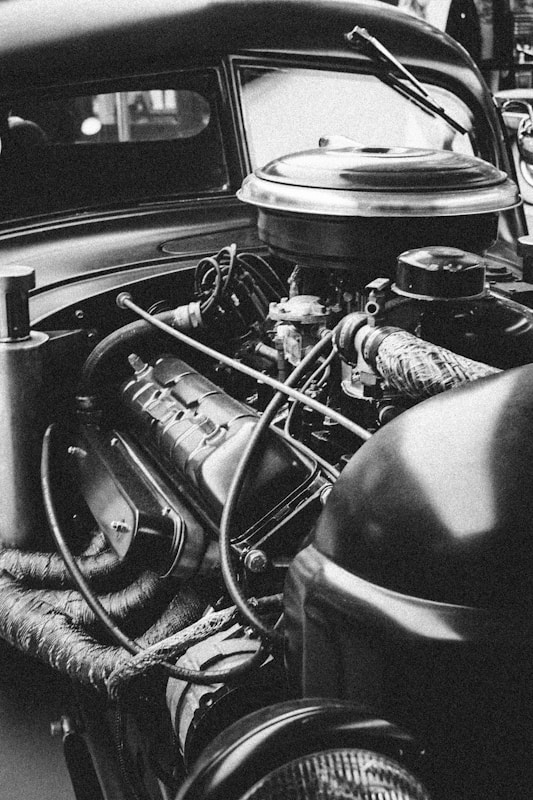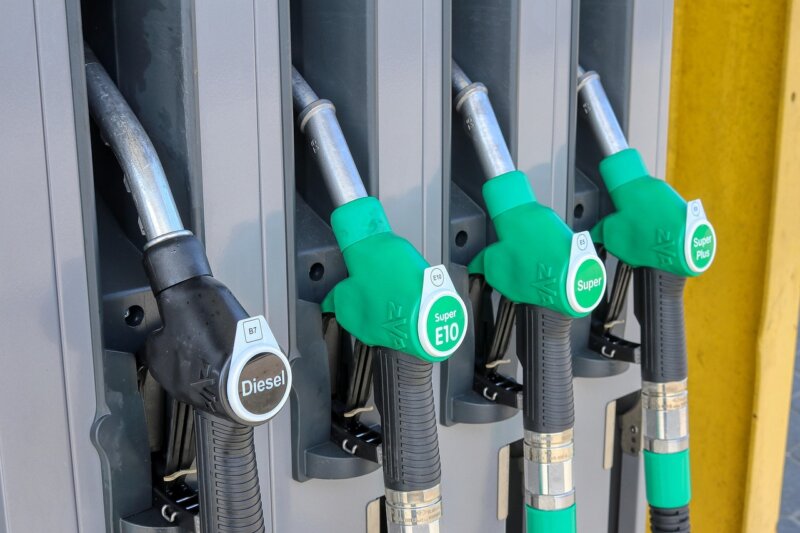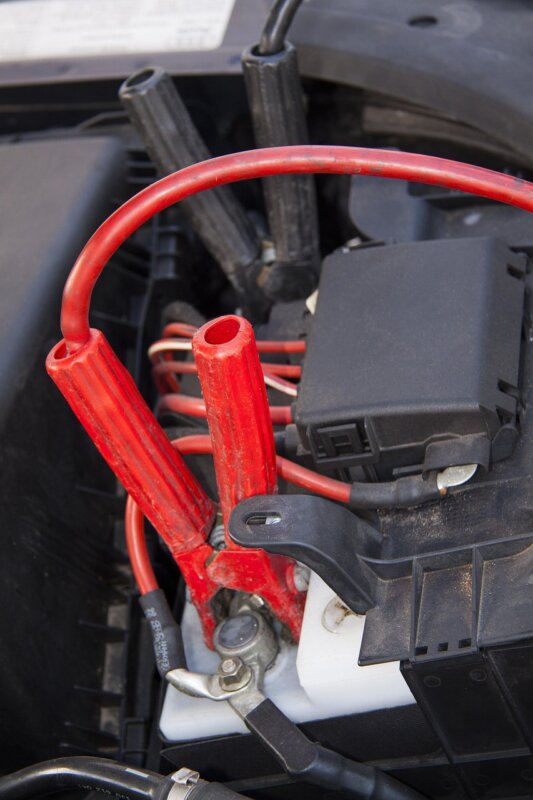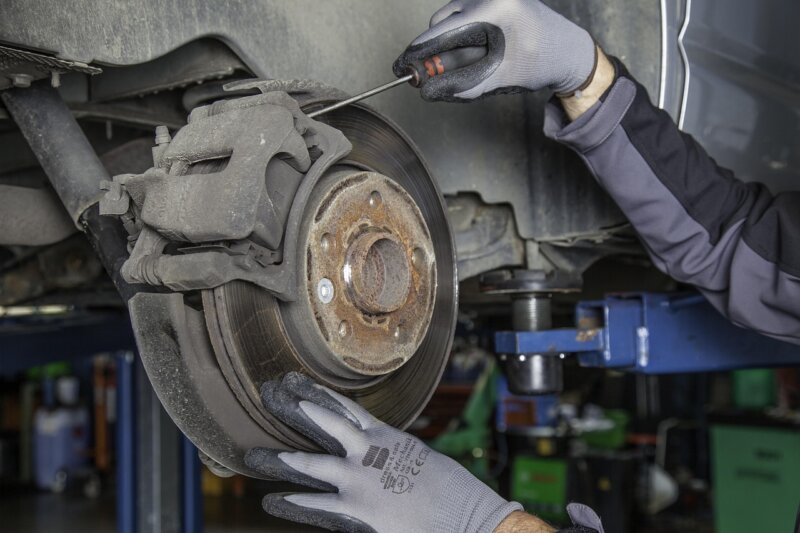Unsure which engine coolant to use, or worried about mixing types? Coolant choice affects engine performance, corrosion protection, and temperature regulation. The wrong mix can trigger engine overheating and big repair bills.
This guide breaks down OAT and HOAT antifreeze in plain terms. You will see how each fluid protects the cooling system, where each fits, and how to avoid costly mistakes.
What is OAT Coolant?
OAT stands for Organic Acid Technology. It uses organic acids, called carboxylates, to shield metal from rust and corrosion. The base mix is simple, distilled water, glycol, and those acid inhibitors. It skips silicates and phosphates used in older formulas.
OAT works well in many modern cars, especially with aluminum parts like radiators and cylinder heads. Typical colors are orange, purple, pink, red, or dark green. Service life tends to be long, often up to 5 years or 150,000 miles. Some versions claim up to 10 years or over 100,000 miles.
Composition and primary features (OAT)
OAT coolant relies on organic acids as corrosion inhibitors. These acids protect metal surfaces without heavy mineral additives. The result is stable protection that lasts for many miles.
Key traits include:
- Base fluids, ethylene or propylene glycol with distilled water
- No silicates or phosphates in most formulas
- Strong support for aluminum and mixed cooling system parts
- Colors are not a guarantee of type across brands
This chemistry helps keep cooling passages clean. It also supports consistent heat transfer for better temperature control.
Benefits and applications (OAT)
OAT coolant is built for long life and steady corrosion control. That matters for modern engines that run hot and use lightweight aluminum parts.
Practical benefits you will notice:
- Strong corrosion protection for radiators and cylinder heads
- Helps resist cavitation, tiny bubbles that can pit metal surfaces
- Fewer coolant changes over time, with longer maintenance intervals
- Good cold protection at a 50, 50 mix, down to about -35 degrees Fahrenheit
Mix OAT with deionized or distilled water for best results. Tap water can add minerals that shorten coolant life.
What is HOAT Coolant?
HOAT stands for Hybrid Organic Acid Technology. It blends organic acids with some inorganic additives like silicates or phosphates. The base is usually ethylene glycol. The mix gives quick metal protection and lasting corrosion resistance.
Common colors include yellow, purple, blue, pink, or turquoise. Many European makes use HOAT. Some Asian brands do as well. Ford and Chrysler have used it in many models since 2001.
Composition and primary features (HOAT)
HOAT combines two strategies, organic acids for long-term stability, plus silicates or phosphates for fast film formation on metal. This helps protect both aluminum and iron parts.
Core features include:
- Ethylene glycol base for freeze protection and heat transfer
- Organic acids for long service life
- Silicates or phosphates for rapid barrier protection
- Broad compatibility with mixed-metal cooling systems
This balanced chemistry supports stable temperature control. It also makes maintenance easier in many vehicles.
Benefits and applications (HOAT)
With HOAT, you get quick-start protection and long coolant life. That balance fits many vehicles that see varied driving and temperatures.
Typical advantages include:
- Protection across many metals found in modern engines
- Good choice for mixed-metal radiators and water pumps
- Common service interval of 5 years or about 100,000 miles
- Works where temperature regulation needs to stay steady
Many makers specify HOAT for reliable corrosion control over time. Follow the exact spec in your manual for best chemical compatibility.
Key Differences Between OAT and HOAT Coolants
OAT and HOAT protect metal in different ways. These differences affect corrosion protection, service life, and compatibility with your cooling system.
Corrosion protection methods
OAT coolants rely on organic acids to stop rust. They form a thin, durable layer on hot metal surfaces. Since there are no silicates in most OAT mixes, inhibitor life tends to be longer.
HOAT coolants add silicates or phosphates to those acids. This blend protects aluminum and iron quickly, then holds that protection over time. Each method targets corrosion in a different way, so results vary by engine design.
Mixing OAT and HOAT reduces the protection both provide. It can form sludge or gel that blocks flow. That puts temperature regulation and corrosion control at risk.
Lifespan and maintenance intervals
OAT often lasts up to 5 years or 150,000 miles. Some versions claim up to 10 years or over 100,000 miles, based on use and brand. HOAT usually runs to 5 years or about 100,000 miles.
Older IAT coolant, often green, needs service much sooner, about every 2 to 3 years or 30,000 miles, sometimes up to 50,000 miles. Mixing OAT and HOAT lowers life sharply, often down to 2 or 3 years or about 30,000 miles. On-time changes protect parts and help prevent engine overheating.
Risks of Mixing OAT and HOAT Coolants
Mixing coolants may look harmless, but chemistry says otherwise. The blend can lose strength fast and harm the cooling system.
Formation of sludge or gel
Mixed OAT and HOAT can create thick sludge or a sticky gel. These clumps can clog narrow passages in the radiator, heater core, and engine block. Coolant flow drops, heat builds up, and you get hot spots.
Clogging often leads to overheating and expensive damage. A simple drain and refill will not fix it. The system needs a complete flush to clear the contamination before fresh coolant is added.
Reduced cooling efficiency
Sludge blocks the radiator, thermostat, and hoses. That cuts cooling efficiency a lot. Less fluid reaches hot parts, so heat stays trapped in the engine.
Bad mixes can also cause additive depletion and fluid neutralization. The chemistry breaks down. You may see big swings in temperature or repeated overheating. That is a clear sign of poor chemical compatibility.
Increased corrosion and engine damage
Mixing weakens corrosion protection across the system. The radiator, thermostat, water pump, hoses, and seals face higher risk. Electrolysis can increase if coolant degrades. A reading above about 400 millivolts on a voltmeter signals a problem.
As inhibitors fade, scale and rust can grow inside passages. Rust flakes may block sensors or stick the thermostat open or closed. Metal wear speeds up, which can shorten engine life in a very real way.
How to Avoid Coolant Mixing
Pick the right engine coolant, then stick with it. A little care protects the cooling system and prevents expensive failures.
Identifying the correct coolant for your vehicle
Start with the owner’s manual. Look for exact specs like Dex-Cool, Motorcraft, G11, G12+, or JIS K 2234. That is the safe match for your engine and radiator materials.
Do not rely on color. Brands use different dyes, and color can fade with age. Many Japanese cars call for phosphate OAT coolants. Many European models avoid phosphates. Ford and Chrysler often specify HOAT.
“Universal” coolant may meet ASTM and SAE standards. If mixed with other fluid types, service intervals may drop. Always match the listed specification. That prevents additive clashes, poor temperature regulation, and corrosion problems.
Proper maintenance practices
If changing coolant types, flush the system completely. That removes old inhibitors and stops cross contamination. Use a clean funnel when refilling to avoid dirt or grit.
- Only open the cap on a cool engine to avoid burns
- Maintain the level between Min and Max after short drives
- Watch for a sweet smell, puddles, or fast level drops
- Fix leaks quickly to prevent overheating and engine damage
Small checks save engines. If unsure about specs or flushing, ask a trusted mechanic.
Safety Tips for Using Coolants
Coolant is toxic. Keep it away from children and pets. Take care when handling and disposing of used fluid.
Handling and storage precautions
Store coolant in a cool, dry place, away from sunlight and extreme temperatures. Some glycerine-based coolants for heavy-duty diesels can boil near 550 degrees Fahrenheit. Ethylene glycol boils near 388 degrees Fahrenheit. Heat can change chemistry and shorten life.
Wear gloves and safety goggles when pouring or flushing. Keep containers sealed and well labeled. Use clean tools and containers to avoid contamination. Follow local rules for disposal or recycling. Never pour used coolant down a drain.
Regular system inspections
Check radiator and reservoir levels often. A sudden drop, sweet smells, puddles, or odd temperature swings point to leaks or other faults. Address them quickly for safety and performance.
A full coolant exchange replaces about 90 to 95 percent of the old fluid. That helps remove air pockets and restores heat transfer. Some shops can recycle and clean your old coolant, which saves money and reduces waste.
Early detection keeps the cooling system healthy. Regular checks also lower the chance of accidental mixing.
Bottom Line
Choosing the right engine coolant protects the cooling system and your wallet. OAT and HOAT use different chemical properties to deliver corrosion protection. Mixing them can form sludge or gel that clogs parts and hurts engine performance.
Follow the owner’s manual, match the exact spec, and ignore color. Keep to the recommended maintenance intervals. A little care with chemical compatibility today can prevent engine overheating and major repairs tomorrow.







